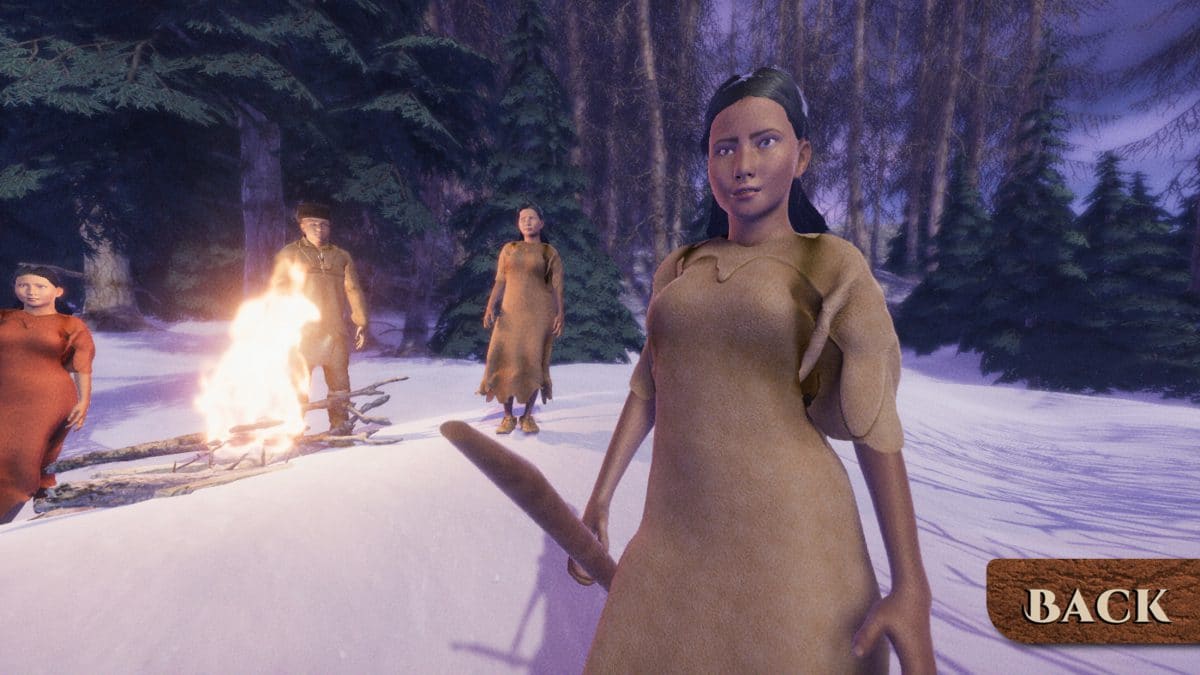Since time immemorial, Potawatomi have come together to build community through traditional games such as zhoshke’nayabo (snow snake), gwzege’wen (bowl and dice) and mamkeznéwen (moccasin). The Citizen Potawatomi Nation’s Cultural Heritage Center plans to release these games spring 2021 on a free, online format.
“The goal was to provide our members and visitors with a realistic virtual and cultural experience that creates a personal link from past to present. The various elements presented in this updated platform, from cultural lessons and gameplay to interacting with a period appropriate landscape, all enhance the educational value of the new program,” said Blake Norton, CHC curator.

CPN Information Technology Department staff member Nathan Hawkins, CHC Studio Manager Shawn Barfield and Norton began developing digital concepts for zhoshke’nayabo (snow snake), gwzege’wen (bowl and dice) and mamkeznéwen (moccasin) in 2017. They worked together to create an interactive display for visitors to learn about traditional games within the CHC’s gallery, Gete Neshnabek Zhechgéwn. Wanting to expand access and finesse the graphic experience, they plan to release them to the online gaming platform STEAM and within the gallery itself.
“We feel that they were a success but didn’t provide a true virtual experience for our members,” Norton said. “Understanding our technical limitations at that time, we knew we wanted to readdress our original goals for the games at a future date and exceed them with a 2.0 version. That is what we have done.”
Creation process
Barfield headed the project, working with two Oklahoma-based industry experts, Dano Scarbrough and Dan Moyer. They took the initial games developed for the CHC and crafted the highest quality graphic experience possible.
“The original one was just a drawing,” Barfield explained. “So it serves the function, but this is now a full, 3D game that you might see on your phone or on a home console.”
Launching the updates required overcoming many obstacles, including a small team and the coronavirus pandemic.
“I think just not being able to get so hands-on with the developers during COVID has been probably the biggest challenge,” Barfield said. “It’s so easy to forget steps during calls versus sitting down and working through it and actually solving the problem right then and there.”
Moyer helped develop the character models, and Barfield focused on overall design and other 3D models while Scarbrough programmed. Rather than meeting in-person, the trio brainstormed and worked over the phone and video chat platforms.
“Video games are like films in which you basically hire an army to take care of all the little tidbits required to create a world,” Barfield said. “So with just three of us … I’m pretty proud of what we’ve accomplished visually.”
The Potawatomi homelands of the Great Lakes region often have long, bitter cold winters. Several of the competitions featured are traditionally played during this season as a way to remain connected.
“We had to make this decision: OK, this is a big game that can take hours if you want it to, how do we make it a two-minute experience? It’s a weird mix to try and retain that community feel in a timely manner,” he explained.

Gameplay
Zhoshke’nayabo includes throwing a stick down a snow-packed passageway to see who can launch it the furthest. Once exclusive to men, mamkeznéwen usually involves gambling and is similar to the shell game with a hider and seeker. Two teams sit opposite of each other and hide bullets under moccasins. The object is to distract and deceive the other side from guessing the correct moccasin. Only women played gwzege’wen at one time, using a wood bowl and eight dice. Six are painted, thin discs, and two are small, carved animals that represents the gwzege’wen owner’s dodem (clan). Players use the bowl to flip the dice, earning points based upon how the pieces land.
To help preserve some of the games’ intricacies, Barfield intertwined deception that is common while playing in their traditional format.
“If you move over a certain moccasin to find the bullet or the ball underneath, the character’s face will change. They might look sad or they might look happy, and that’s kind of a tell. You don’t know for sure if that tell is fake or a real showing, so there is some psychology involved,” he said.
Incorporating layered elements also helps provide the most authentic user experience possible.
“Music has always been a big part of gaming and emotionally convincing the enemy that you’re strong, so that was an interesting thing for me to think about — that music can play a big part in deceiving the opponent or discouraging the opponent,” Barfield said.
This project furthers the Cultural Heritage Center’s mission to connect the Citizen Potawatomi to their history and culture through fun, educational platforms.
“These games allow the user(s) to step back in time and really feel what it is like to engage in these important social gatherings,” Norton said.
The Cultural Heritage Center plans to release the games online as well as within its gallery Gete Neshnabek Zhechgéwn spring 2021. For more information on the CHC and its educational programming, visit potawatomiheritage.com.
